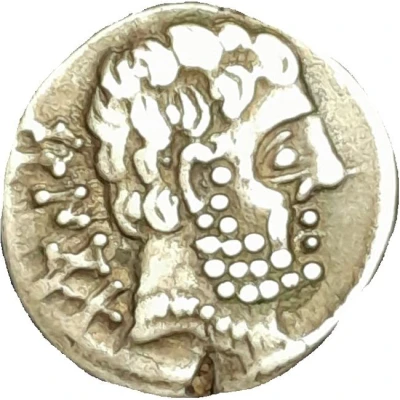


© Henry
Denarius 125 BC - 101 BC
| Silver | 3.67 g | 19 mm |
| Issuer | Baskunes gens (Vascones people) |
|---|---|
| Type | Standard circulation coin |
| Years | 125 BC - 101 BC |
| Value | 1 Denarius |
| Currency | Denarius (late 2nd century BC) |
| Composition | Silver |
| Weight | 3.67 g |
| Diameter | 19 mm |
| Shape | Round (irregular) |
| Technique | Hammered |
| Orientation | Variable alignment ↺ |
| Demonetized | Yes |
| Updated | 2024-10-10 |
| Numista | N#382202 |
|---|---|
| Rarity index | 95% |
Reverse
Rider with sword to the right, below on line, Iberian inscription
Script: Iberian (Celtiberian)
Lettering: BASKUNES
Comment
Obverse inscription:"BeNKoTa" written from left to right in northeastern (Levantine) Iberian non-dual script.
Reverse inscription:
"BaS'KuNES" written from left to right in northeastern (Levantine) Iberian non-dual script.
Interesting fact
The Denarius coin from the Baskunes gens (Vascones people) is interesting because it features a unique design that reflects the cultural and historical context of the time. On one side, the coin depicts a stylized image of a wild boar, which was a symbol of strength and fertility in ancient Celtic culture. On the other side, it features the image of a warrior, likely a representation of the Vascones people who were known for their military prowess. The coin's design serves as a window into the cultural practices and beliefs of ancient Celtic societies, and its silver content makes it a valuable artifact for collectors and historians.